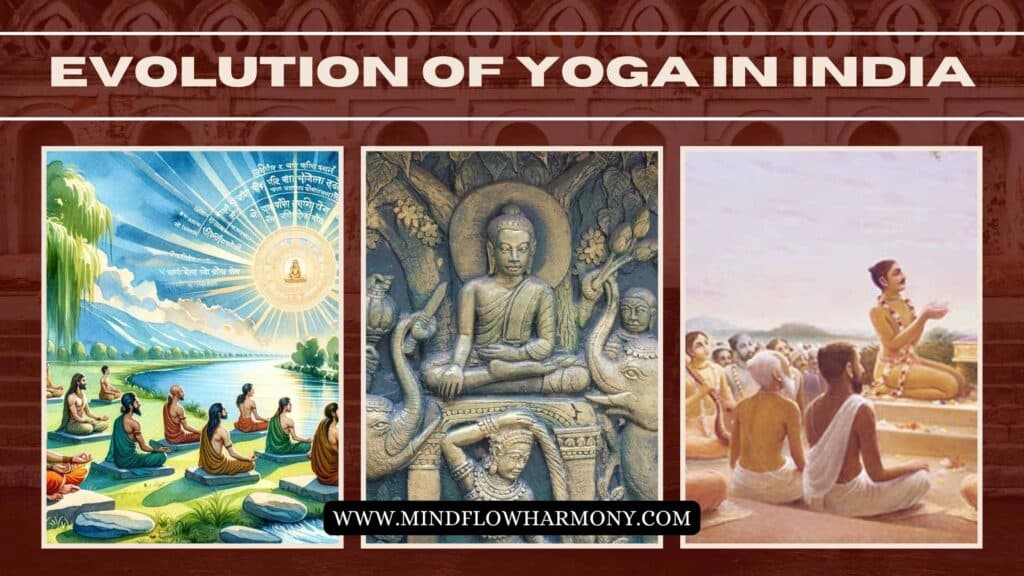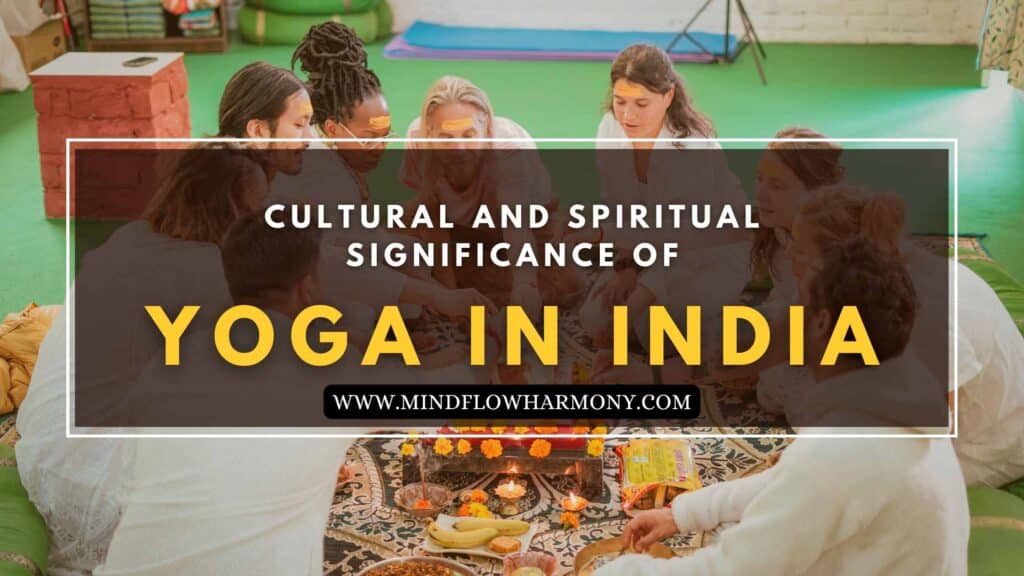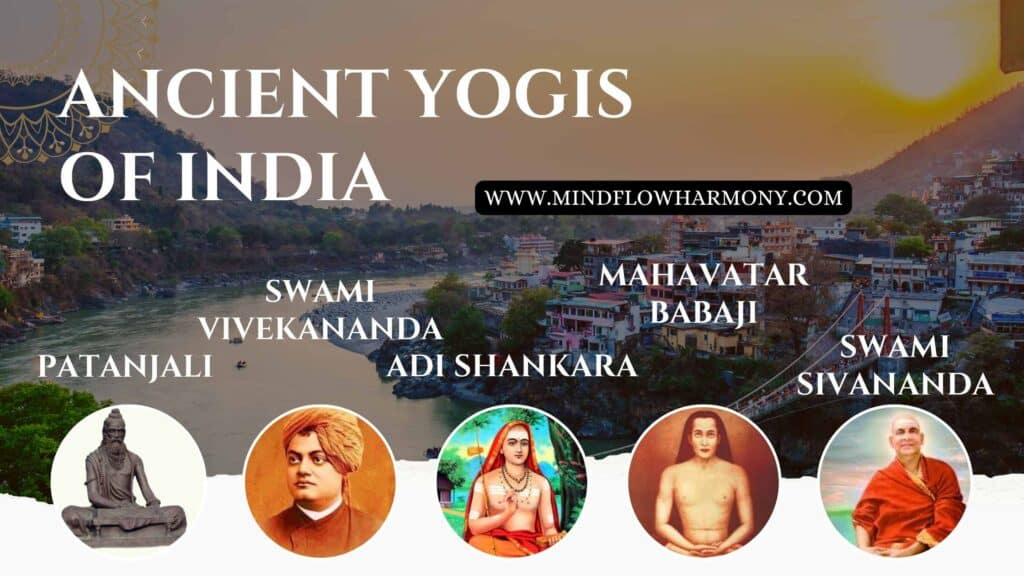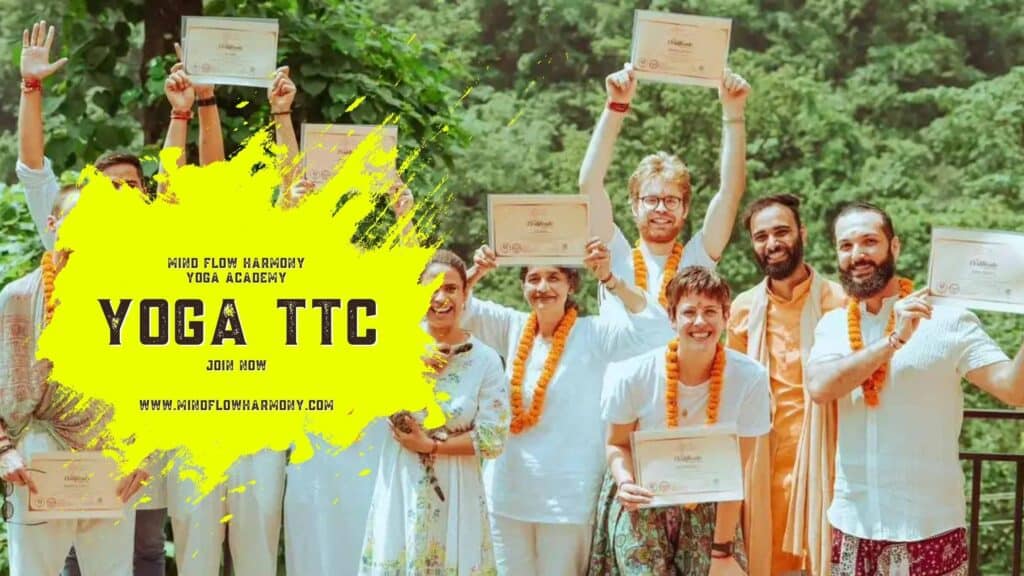It is an important part of Indian culture and heritage as it is known for promoting spiritual and mental peace. It has evolved timely and is now recognized as the best way to maintain physical, spiritual, and mental health. Each Yoga pose or mudra will aim to align the mind and body which will further foster inner peace. If you really want to know about why yoga in India in detail, continue reading.
Yoga is a practice that will basically focus on the connection of the mind and body to get inner harmony. The word “Yoga” is taken from the Sanskrit word “Yuj” which simply means to join or unite. Also, it is mentioned in ancient texts like the Rig Veda and has been considered as a spiritual discipline. According to Yogic teachings, when you practice Yoga, it will help you to combine your consciousness with the universal consciousness which will thereby lead to a deep harmony between your mind, body, and nature.
Table of Contents
Evolution of Yoga in India

Yoga is an ancient practice from India that combines physical exercises, breathing exercises, meditation, and moral guidelines. It is a holistic approach to improving both your body and mind. The origins of yoga have taken place 5000 years ago in the Indus Valley civilization. But it was the time of the classical period of Indian history, between 800 BCE and 500 CE when yoga became more systematic and codified.
At this time, thoughts of various philosophical schools have emerged in India like the Samkhya Yoga and Vedanta schools. These schools came up with different ideas and practices about yoga such as the self idea (atman), the nature of reality (Brahman), and how to reach liberation (moksha). The Yoga school especially created a complete system of yoga that included breathing techniques (pranayama), meditation (dhyana), physical postures (asanas), and moral principles (yamas and niyamas).
Impact of the Yoga Sutras of Patanjali
The Yoga Sutras of Patanjali, written around 200 CE, is an important text about yoga. It will explain about the eight limbs of yoga which include ethical principles, physical postures, breathing techniques, concentration, meditation, and samadhi (a state of spiritual enlightenment). This text had a big impact on yoga and is still studied today. Yoga was first practiced by disciplined Yogis who wanted to go beyond the physical world and find spiritual freedom. But over time, more people started doing yoga. Regular people started doing it to get healthier, reduce stress, and live better lives.
Spread of Yoga in India
At the time of the medieval period in India, yoga continued to change and grow. The Bhakti movement which focused on devotion to a personal god started using yoga in their religious ceremonies. This led to Bhakti yoga which is a type of yoga that stresses devotion and love for a personal deity. Hatha yoga also started during this time itself. It focused on physical poses and breathing exercises to purify the body and get it ready for spiritual practices. Books like the Hatha Yoga Pradipika and the Gheranda Samhita will give detailed instructions on different asanas and breathing (pranayama) techniques.
Global Influence of Yoga
Yoga started to become really popular in the West in the 20th century, especially in the United States. But, this happened partially due to the efforts given by yoga teachers and gurus like Swami Vivekananda, Paramahansa Yogananda, and B.K.S. Iyengar. Also, they traveled to the West and introduced yoga to Western people. Today, millions of people all over the world are practicing yoga by considering it as a popular way to exercise and relax. It is popular for its various health benefits like balance, strength, improved flexibility, and cardiovascular health. It will also help you to reduce stress, anxiety, and depression.
Cultural and Spiritual Significance of Yoga in India

In India, yoga is a huge part of India’s culture and spirituality. It is taught in schools and universities, and there are many yoga centers and ashrams across the country. In 2014, the Indian government made June 21st International Yoga Day to celebrate yoga’s worldwide popularity and importance. Yoga in India has a long and complex history that goes back thousands of years. It has changed and grown over time by blending different philosophical, religious, and cultural ideas. Today, yoga is practiced all over the world and remains an important part of India’s cultural and spiritual traditions.
Spiritual significance of yoga in India is very deep. It is often seen as a way to understand yourself better and achieve spiritual enlightenment. Yoga comes from ancient Indian spiritual traditions and is a huge part of the country’s culture. One of the main spiritual ideas in yoga is the idea of being united or as one. Yoga is aiming to bring your mind, body, and spirit together to help you connect with who you really are and the world around you. This connection is thought to bring more awareness, kindness, and inner calm.
Yoga is closely connected with Hinduism which is a major religion in India. Lots of yoga poses and practices come from Hindu stories and are meant to help people connect with the gods. One type of yoga is hatha yoga and it is linked to the Hindu god Shiva. It is often shown sitting in meditation. People often do yoga along with other spiritual practices like meditation, breathing exercises, and chanting. These practices will help calm the mind, increase self-awareness, and connect with the divine.
Ancient Yogis of India

Have a look at the ancient yogis of India right below.
Patanjali: Patanjali is called the father of yoga. He wrote the Yoga Sutras which is an important yoga book. He probably lived in India between the 2nd century BCE and the 5th century CE.
Swami Vivekananda: Swami Vivekananda was an Indian monk in the 1800s. He helped make yoga and Indian spiritual ideas popular in the West. He learned from the great saint Ramakrishna and started the Ramakrishna Mission to spread yoga and Vedanta teachings.
Adi Shankara: Adi Shankara was an Indian philosopher in the 8th century. He wrote about the Vedas which are ancient Hindu books. He is one of India’s most important spiritual leaders and his teachings still influence Hinduism and other Indian spiritual ideas today.
Mahavatar Babaji: Mahavatar Babaji is a famous figure in Indian spirituality. It is said that he lived for many years and became spiritually enlightened through yoga. He is often seen as a teacher to other great yogis and spiritual leaders like Lahiri Mahasaya and Paramahansa Yogananda.
Swami Sivananda: Swami Sivananda was an Indian yogi in the 1900s. He started the Divine Life Society to teach yoga and Vedanta. He focused a lot on karma yoga which is doing selfless service to grow spiritually.
Best Places for Yoga in India

Check out the best places for yoga in India below.
Rishikesh: Rishikesh is in the Himalayan foothills and is famous as the “Yoga Capital of the World.” It has many ashrams, yoga centers, and schools that attract yoga lovers from all over the world. Popular places in Rishikesh for yoga will include Parmarth Niketan, Sivananda Ashram, and the International Yoga Festival. There are also many schools that offer various courses and among them, the Yoga Teacher Training Course is the most popular one.
Mysore: Mysore located in Karnataka is known for its traditional style of yoga called Ashtanga yoga. The city is home to the famous Ashtanga Yoga Institute where people can learn this style from experienced teachers.
Kerala: Kerala is known for its beautiful backwaters and green landscapes and it is also loved by yoga enthusiasts. It has many yoga centers and ashrams like Sivananda Ashram and Amritapuri Ashram which offer retreats and teacher training programs.
Goa: Besides being a popular beach spot known for its relaxed atmosphere and parties, Goa has several yoga centers and retreats such as Purple Valley Yoga Retreat and Ashiyana Yoga Retreat. Yoga Teacher Training courses in Goa are also becoming very popular.
Dharamsala: Dharamsala located in Himachal Pradesh is the place where the Dalai Lama and the Tibetan government-in-exile are based. It is also known for yoga with places like Tushita Meditation Centre, Himalayan Iyengar Yoga Centre, and Siddhi Yoga Dharamshala that offer classes.
Varanasi: Varanasi is one of India’s oldest and most sacred cities. It is known for its spiritual and cultural importance. It also has several yoga centers and schools like the International Yoga and Meditation Centre and the Patanjali Yoga Centre.
Yoga as an Indian Heritage
Yoga is seen as one of India’s important cultural and spiritual traditions. The word “yoga” comes from the Sanskrit word “yuj,” meaning to unite or join. Yoga’s goal is to unite universal consciousness with individual consciousness using physical poses, breathing exercises, and meditation.
The history of yoga goes back over 5,000 years to the ancient Indus Valley Civilization in India. It was first talked about in the Vedas which are the oldest sacred texts of Hinduism. As time passed, yoga changed and became many different styles and traditions, each with its own ideas and beliefs. Yoga has been really important in Indian culture and spirituality.
People have used it to grow personally, understand themselves better, and be healthier in body, mind, and emotions. Yoga is also connected to India’s religions like Hinduism, Jainism, and Buddhism. In recent times, yoga has become popular worldwide and spread from India to many other countries. Today, millions of people all over the world practice yoga by learning and following various styles and traditions.
Yoga is popular worldwide, but it is still a huge part of India’s cultural heritage. The Indian government is working to promote yoga to keep its rich culture alive. In 2014, the United Nations decided that June 21 would be International Yoga Day to show how important yoga is globally.
Yoga is a key part of India’s cultural heritage which is deeply rooted in its history, religion, and spirituality. Its ongoing popularity in India and all over the world shows how important and lasting this ancient practice is.
Best Yoga Courses in India

Yoga courses in India are very important because India has a rich history and heritage with yoga. India is the place where yoga started. Thus, it is the best place to learn and practice yoga in its original form. These courses in India will teach yoga in a complete way which will cover not just the physical exercises but also the spiritual and philosophical parts. They will help students understand yoga as a lifestyle, not just a workout. Also, the best yoga courses in India will allow students to learn from experienced teachers who have spent their lives practicing and understanding yoga deeply.
Many of these teachers will work in traditional ashrams which further give students a full experience of the yogic lifestyle. Completing a yoga course in India will give people a certification that will be recognized worldwide. This certification is called Yoga TTC and it is accepted by international yoga groups like Yoga Alliance. It will help people start a successful career as a yoga teacher because they can easily find jobs in yoga studios, wellness centers, and gyms all over the world.
Conclusion
The journey of yoga began thousands of years ago in ancient India where it blossomed as a path to spiritual and physical well-being. It has since transcended its origins to become a global phenomenon. Yet, yoga remains an integral part of India’s cultural heritage which is a testament to its enduring significance. Here in India, you have the unique opportunity to explore yoga’s transformative potential in its birthplace. Delve into its rich traditions and discover how this ancient practice can empower your mind, body, and spirit.





